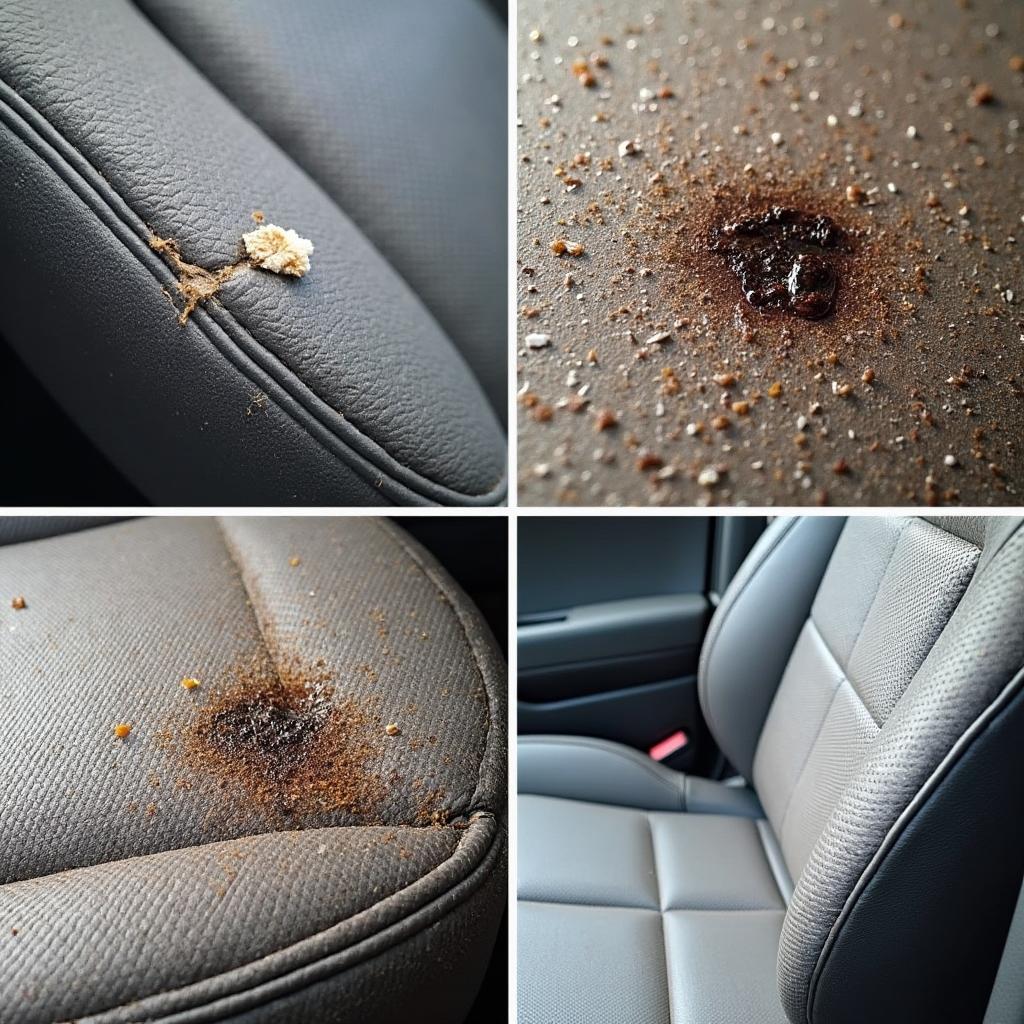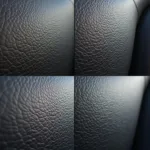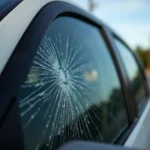Torn, stained, or faded fabric car seats can make your car’s interior look worn and unappealing. While a complete reupholstering can be expensive, there are numerous DIY methods to repair car seat fabric and restore its former glory. This guide delves into practical techniques to effectively address common car seat fabric issues.
Understanding the Damage: Identifying the Problem
Before diving into repairs, assess the type and extent of damage to your car seat fabric.
- Tears and Rips: These can occur from sharp objects, rough use, or simply wear and tear over time.
- Burns: Cigarettes, lighters, or even hot objects can leave unsightly burn marks.
- Stains: Spills, dirt, and grime can penetrate the fabric and create stubborn stains.
- Fading: Prolonged exposure to sunlight can cause the fabric color to fade.
Essential Tools and Materials for Repair
Having the right tools and materials is crucial for effective car seat fabric repair. Common items include:
- Fabric Repair Kit: Choose a kit specifically designed for car upholstery, often available online or at auto parts stores. These kits usually include patches, adhesive, and color matching options.
- Scissors: Sharp fabric scissors ensure clean cuts for patches or fabric pieces.
- Tweezers: Useful for removing debris from tears or burns before applying patches.
- Clean Cloth: A microfiber cloth is ideal for cleaning the area around the damage and applying cleaning solutions.
- Rubbing Alcohol: Effective for cleaning surfaces and removing residues before applying patches.
Step-by-Step Guide to Repairing Tears and Rips
- Clean the Area: Use rubbing alcohol and a clean cloth to thoroughly clean the area around the tear, removing dirt, dust, and debris.
- Prepare the Patch (if needed): If the tear is large, cut a fabric patch slightly larger than the tear from a matching fabric or use a patch from a repair kit.
- Apply Adhesive: Apply fabric adhesive to the underside of the patch or directly to the edges of the tear, following the manufacturer’s instructions.
- Position and Press: Carefully align the patch over the tear (if using one) and press firmly, ensuring proper adhesion.
- Allow to Dry: Let the adhesive dry completely according to the manufacturer’s instructions.
- Trim Excess Fabric (if needed): Once dry, carefully trim any excess fabric from the patch using sharp scissors.
Remember, for small tears or snags, a fabric sealant or liquid stitch product can be a quicker solution.
Dealing with Burns and Stains
- Burns: Small burns can often be masked by gently rubbing the area with a matching fabric marker or using a specialized burn repair solution. For larger burns, consider using a patch or consulting a professional.
- Stains: Different types of stains require specific cleaning solutions. Always test any cleaner on a hidden area of the fabric first to avoid further discoloration.
Preventive Measures: Protecting Your Car Seat Fabric
- Regular Cleaning: Vacuum your car seats regularly to remove dust and debris. Use a fabric cleaner specifically designed for car upholstery to tackle spills and stains promptly.
- Seat Covers: Consider using seat covers to protect your car seats from spills, dirt, and UV damage, especially if you frequently transport children or pets.
- Avoid Eating or Drinking in the Car: This simple practice can significantly reduce the risk of spills and stains.
When to Seek Professional Help
While DIY repairs are suitable for minor damages, some situations may require professional attention:
- Extensive damage that cannot be adequately addressed with DIY methods.
- Airbag deployment that has affected the car seat upholstery.
- Lack of confidence in your ability to perform the repair effectively.
how to repair leather car seat ripped
Expert Insights on Car Seat Fabric Repair
“Many car owners underestimate the impact of regular cleaning on the longevity of their car seats,” says John Smith, a seasoned automotive upholstery specialist with over 20 years of experience. “Regular vacuuming and prompt stain removal can prevent dirt and spills from deeply embedding into the fabric, minimizing the risk of permanent damage.”
can you repair ripped leather car seats
Conclusion
Repairing car seat fabric can seem daunting, but with the right approach, it’s achievable for most car owners. By understanding the type of damage, using appropriate repair techniques, and following preventive measures, you can significantly improve the appearance and lifespan of your car seats. Remember, for extensive damage or if you’re unsure about a repair, seeking professional help is always a wise decision.



